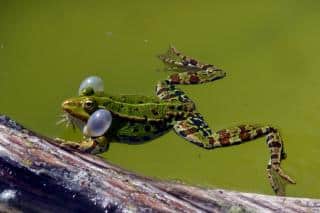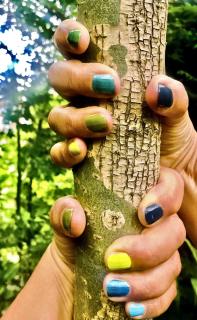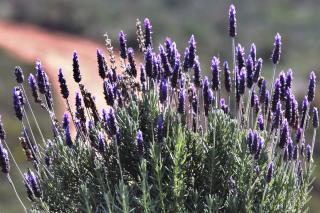

A sensory garden has a simple goal: maximize the sensory experience of its visitors. Designing such a garden isn’t very difficult. You can follow various themes, set portions up into dedicated areas, or fuse all the experiences together as a whole.
They’re generally very guest-friendly and inviting, leading their visitors to touch, taste, admire and listen.
Creating a sensory garden is an exciting project that’s very useful, a fabulous opportunity to teach about nature. It even has therapeutic virtues and appears in techniques related to garden therapy (naturopathy, hortitherapy, aromatherapy).
 Every garden appeals to the senses in one way or the other. Indeed, every single plant has individual characteristics that appeal to the 5 senses in a unique manner. There is nothing more pleasant that to stroll through a garden to admire the rainbow of colors and diversity of textures, all the while taking in the soft fragrance of blooming flowers.
Every garden appeals to the senses in one way or the other. Indeed, every single plant has individual characteristics that appeal to the 5 senses in a unique manner. There is nothing more pleasant that to stroll through a garden to admire the rainbow of colors and diversity of textures, all the while taking in the soft fragrance of blooming flowers.
Sensory gardens bring together objects, surfaces, ornaments and plants that stimulate our senses of touch, sight, smell, taste and hearing. Each garden is a space that might aim to trigger a great number different sensations.
There are countless sensory garden designs, and they can usually all be adapted to match the goals of any garden in particular.
If you aim to create a garden to teach little children, for instance, keep in mind that it shouldn’t be too large, and that plants should remain within reach of their little hands.
 If preparing a garden for people who are in wheelchairs, on the other hand, make sure that plants are not only within reach, but that paths remain convenient for these people to use.
If preparing a garden for people who are in wheelchairs, on the other hand, make sure that plants are not only within reach, but that paths remain convenient for these people to use.
The deeper beauty of sensory gardens lies in the fact that they can be infinitely enhanced to answer the wishes of a great many users. Start with a well-thought out plan. Project yourself in the future so that there’s enough space still when the plants you’ve chosen have grown to their mature size. Incorporate landscaping elements, as well, such as benches, pathways, water fountains, bird feeders and even garden art to make your sensory garden patch an even richer experience. Don’t forget topiary, either.
First and foremost, before you even choose the plants to grow in your sensory garden, it’s crucial to limit your selection of plants to those that will thrive in your region. Native plants are an excellent choice because they’re already used to growing in the area and will resist diseases much better. Moreover, they tend to require much less care than non-native plants. Lastly, include plants and objects that appeal to the senses.
 Sound – To stimulate hearing, select flora that makes sounds when the wind runs through it, such as bamboo stems. May types of seed pods also produce interesting sounds. At the end of the year, fallen leaves may also trigger hearing as they crisply crinkle underfoot. You might also want to include plants that attract local fauna to the garden. The buzz of a bee, the chant of a cricket, a frog’s ribbit-ribbit or the tweet of a bird all greatly stimulate the sense of hearing.
Sound – To stimulate hearing, select flora that makes sounds when the wind runs through it, such as bamboo stems. May types of seed pods also produce interesting sounds. At the end of the year, fallen leaves may also trigger hearing as they crisply crinkle underfoot. You might also want to include plants that attract local fauna to the garden. The buzz of a bee, the chant of a cricket, a frog’s ribbit-ribbit or the tweet of a bird all greatly stimulate the sense of hearing.However, don’t plant anything that might be dangerous, such as thorny roses or spiky agave plants.
 Smell – The sense of smell has a particular place in our beings, and is tightly bound to memory. Specific fragrances “click” and project us back in time. Smells relate us to other places and people connected to them in our personal memory banks. Most sensory gardens are filled with different smells that bring on a wide palette of emotions. Very fragrant plants, such as the smooth-scented gardenia, honeysuckle, or French lavender pictured here provide excellent stimulation for smell, as do herbs and spices.
Smell – The sense of smell has a particular place in our beings, and is tightly bound to memory. Specific fragrances “click” and project us back in time. Smells relate us to other places and people connected to them in our personal memory banks. Most sensory gardens are filled with different smells that bring on a wide palette of emotions. Very fragrant plants, such as the smooth-scented gardenia, honeysuckle, or French lavender pictured here provide excellent stimulation for smell, as do herbs and spices.